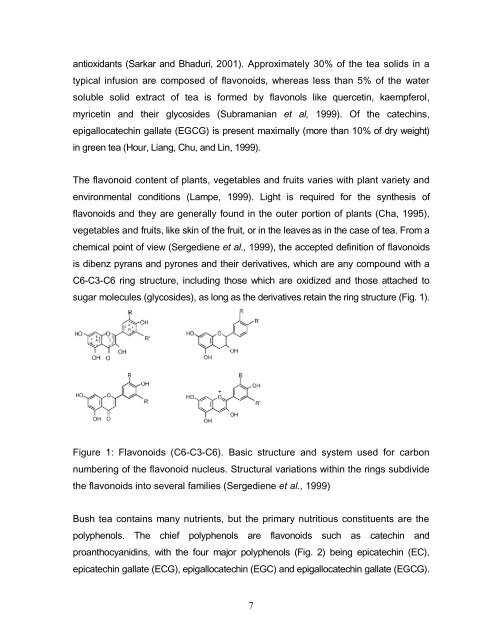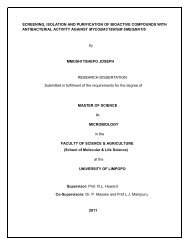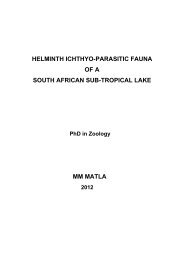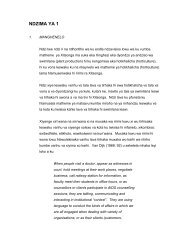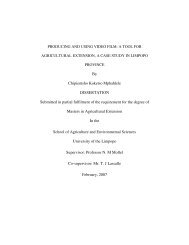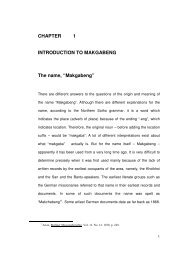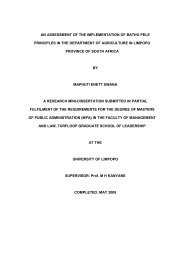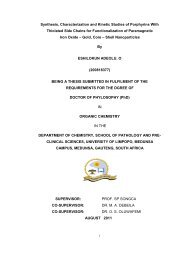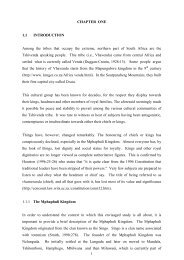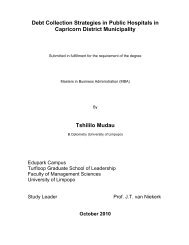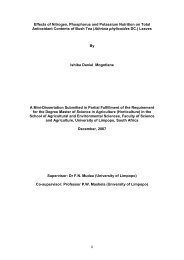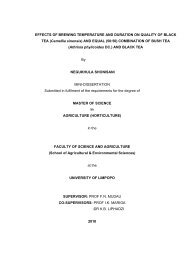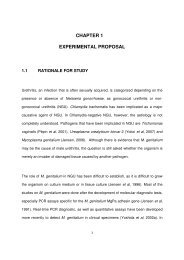Hlahla LN Mini-Dissertation.pdf - University of Limpopo Institutional ...
Hlahla LN Mini-Dissertation.pdf - University of Limpopo Institutional ...
Hlahla LN Mini-Dissertation.pdf - University of Limpopo Institutional ...
Create successful ePaper yourself
Turn your PDF publications into a flip-book with our unique Google optimized e-Paper software.
antioxidants (Sarkar and Bhaduri, 2001). Approximately 30% <strong>of</strong> the tea solids in a<br />
typical infusion are composed <strong>of</strong> flavonoids, whereas less than 5% <strong>of</strong> the water<br />
soluble solid extract <strong>of</strong> tea is formed by flavonols like quercetin, kaempferol,<br />
myricetin and their glycosides (Subramanian et al, 1999). Of the catechins,<br />
epigallocatechin gallate (EGCG) is present maximally (more than 10% <strong>of</strong> dry weight)<br />
in green tea (Hour, Liang, Chu, and Lin, 1999).<br />
The flavonoid content <strong>of</strong> plants, vegetables and fruits varies with plant variety and<br />
environmental conditions (Lampe, 1999). Light is required for the synthesis <strong>of</strong><br />
flavonoids and they are generally found in the outer portion <strong>of</strong> plants (Cha, 1995),<br />
vegetables and fruits, like skin <strong>of</strong> the fruit, or in the leaves as in the case <strong>of</strong> tea. From a<br />
chemical point <strong>of</strong> view (Sergediene et al., 1999), the accepted definition <strong>of</strong> flavonoids<br />
is dibenz pyrans and pyrones and their derivatives, which are any compound with a<br />
C6-C3-C6 ring structure, including those which are oxidized and those attached to<br />
sugar molecules (glycosides), as long as the derivatives retain the ring structure (Fig. 1).<br />
Figure 1: Flavonoids (C6-C3-C6). Basic structure and system used for carbon<br />
numbering <strong>of</strong> the flavonoid nucleus. Structural variations within the rings subdivide<br />
the flavonoids into several families (Sergediene et al., 1999)<br />
Bush tea contains many nutrients, but the primary nutritious constituents are the<br />
polyphenols. The chief polyphenols are flavonoids such as catechin and<br />
proanthocyanidins, with the four major polyphenols (Fig. 2) being epicatechin (EC),<br />
epicatechin gallate (ECG), epigallocatechin (EGC) and epigallocatechin gallate (EGCG).<br />
7


